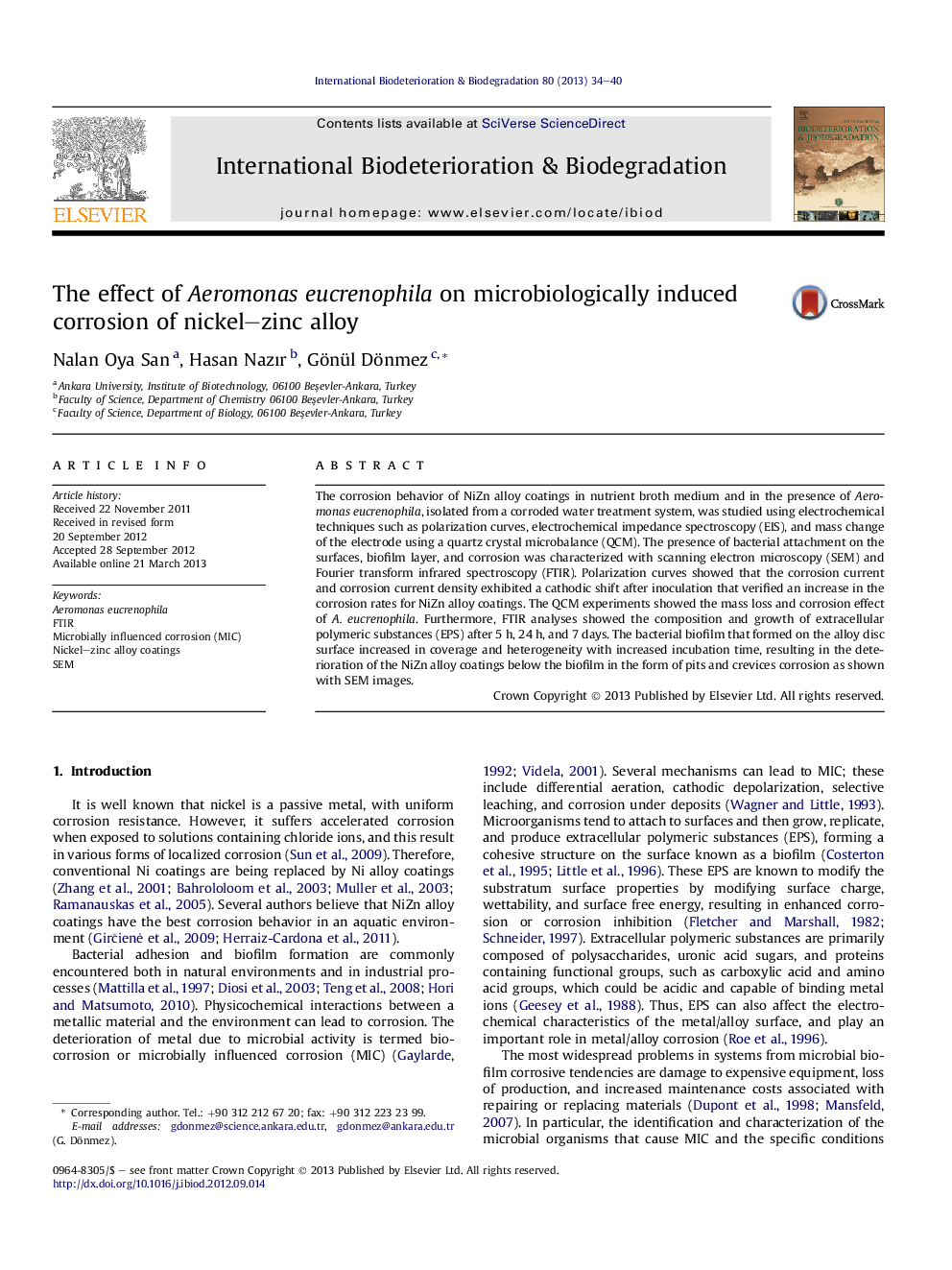| Article ID | Journal | Published Year | Pages | File Type |
|---|---|---|---|---|
| 4365015 | International Biodeterioration & Biodegradation | 2013 | 7 Pages |
The corrosion behavior of NiZn alloy coatings in nutrient broth medium and in the presence of Aeromonas eucrenophila, isolated from a corroded water treatment system, was studied using electrochemical techniques such as polarization curves, electrochemical impedance spectroscopy (EIS), and mass change of the electrode using a quartz crystal microbalance (QCM). The presence of bacterial attachment on the surfaces, biofilm layer, and corrosion was characterized with scanning electron microscopy (SEM) and Fourier transform infrared spectroscopy (FTIR). Polarization curves showed that the corrosion current and corrosion current density exhibited a cathodic shift after inoculation that verified an increase in the corrosion rates for NiZn alloy coatings. The QCM experiments showed the mass loss and corrosion effect of A. eucrenophila. Furthermore, FTIR analyses showed the composition and growth of extracellular polymeric substances (EPS) after 5 h, 24 h, and 7 days. The bacterial biofilm that formed on the alloy disc surface increased in coverage and heterogeneity with increased incubation time, resulting in the deterioration of the NiZn alloy coatings below the biofilm in the form of pits and crevices corrosion as shown with SEM images.
► NiZn alloys coatings have the best corrosion behavior in an aquatic environment. ► Aeromonas eucrenophila attached on alloy surface and produced biofilm. ► The microbial corrosion was determined by the QCM, polarization curves and EIS. ► The corrosion current and corrosion current density exhibited a cathodic shift after inoculum. ► Acidic groups in EPS increased NiZn alloy corrosion by lowering the interfacial pH.
